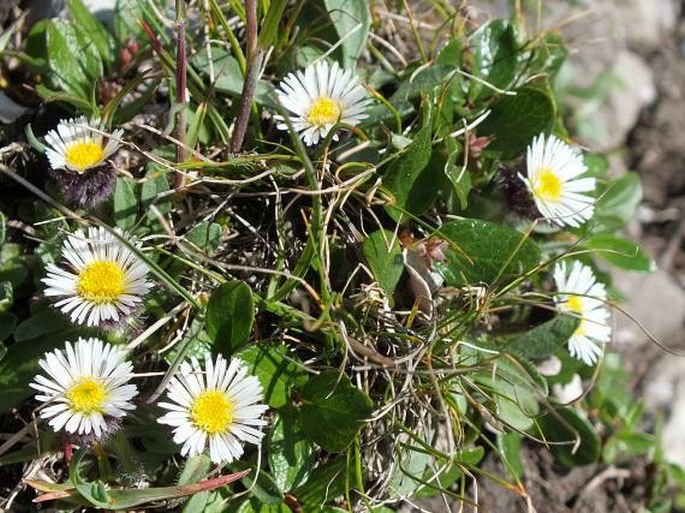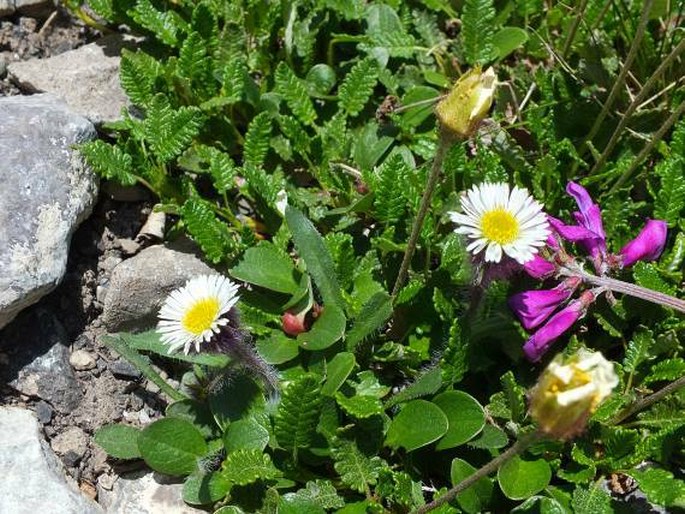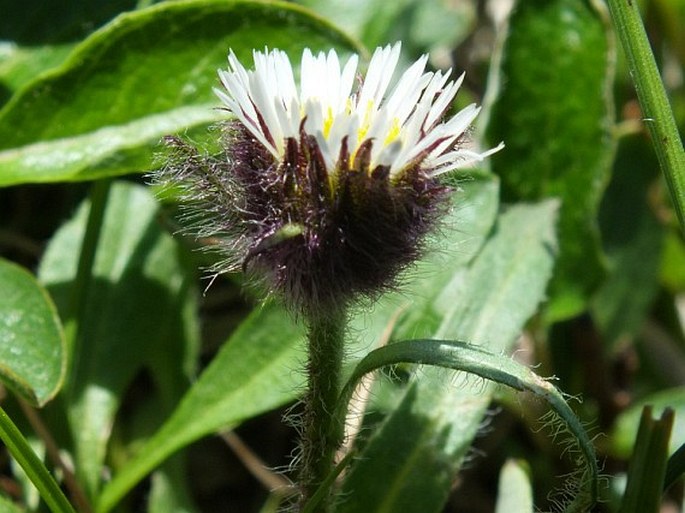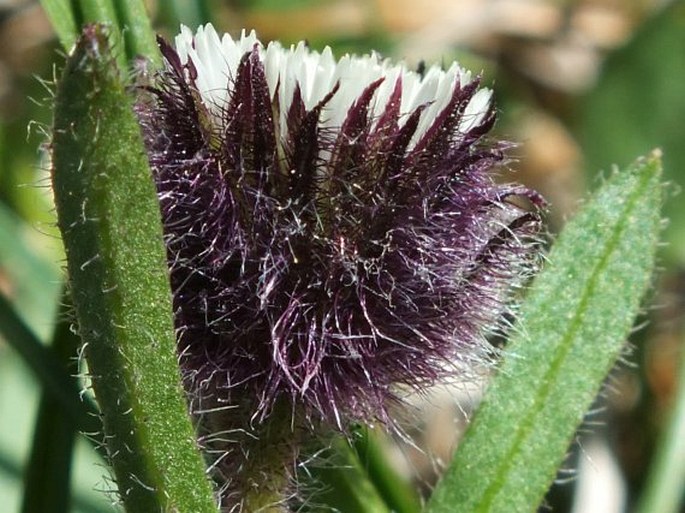Syn.: Erigeron pulchellus var. unalaschkensis DC., Erigeron unalaschkensis (DC.) Vierh., Erigeron uniflorus f. pallidus (Cronquist) B. Boivin, Erigeron uniflorus var. unalaschkensis (DC.) Ostenf.
Family: Asteraceae Bercht et J. Presl

Distribution: Amphi-Atlantic and amphi-Beringian arctic species, native to Iceland, northern Fennoscandia, Svalbard, Kamchatka, Chukotka, and North America, where it occurs from Alaska across northern Canada to Greenland, in US in Rocky Mountain states of Idaho, Montana, Wyoming, Utah and Colorado.
Ecology: Moist to wet, open sites in alpine environment, arctic tundra, close to water, at elevations 1000–2400 m, occasionally to 4000 m asl. Blooms June to September, depending on elevation.
Description: Perennial herb, 2–25 cm tall. Stems densely hairy, from short tap root or branching root crown, with fibrous roots. Basal leaves oblanceolate to spatulate, 10–50 × 2–7 mm, margins smooth, faces sparsely to moderately hairy, stem leaves smaller and narrower. Heads solitary, involucres 6–9 mm long, phyllaries in (1–)2(–3) series, dark purple, strigoso-hirsute; ray florets 50–150, corollas bluish purple to lavender, rarely whitish, 4–6 mm, laminae erect, filiform, 0.3–1 mm wide, not coiling or reflexing; numerous disc florets yellow. Fruits two-nerved achenes, hairy, with white pappus.



These images were taken in Canada, Alberta, Kananaskis, Ptarmigan Cirque (June 27, 2015).


